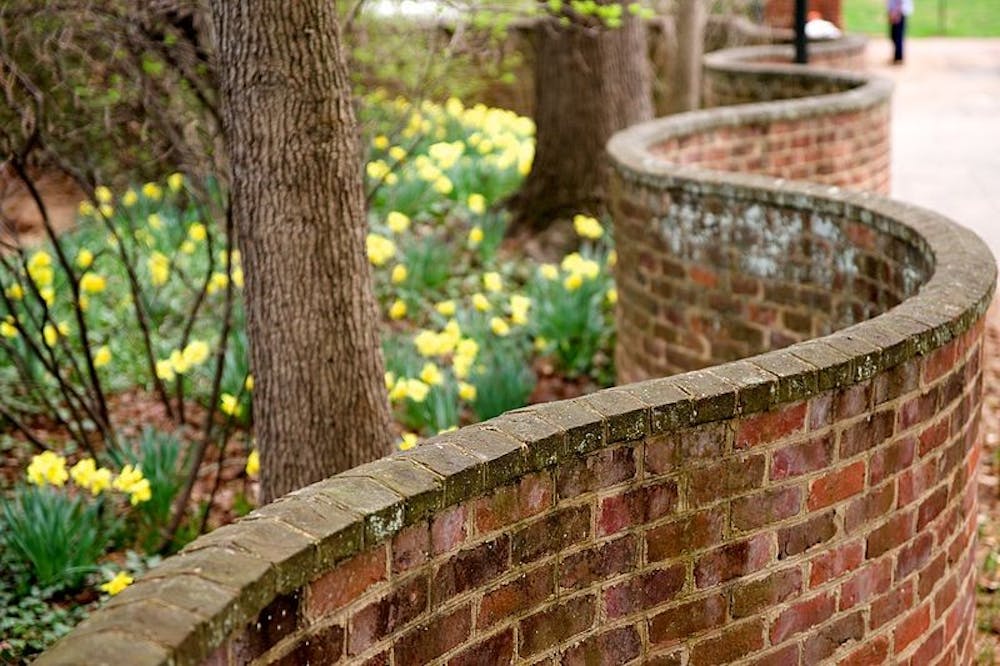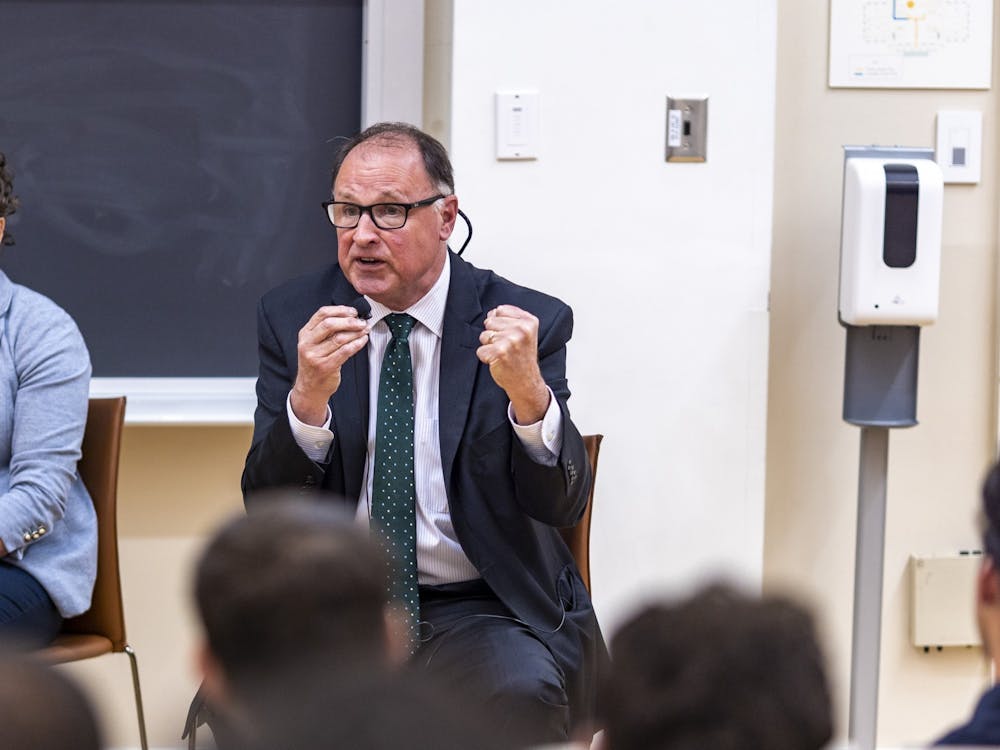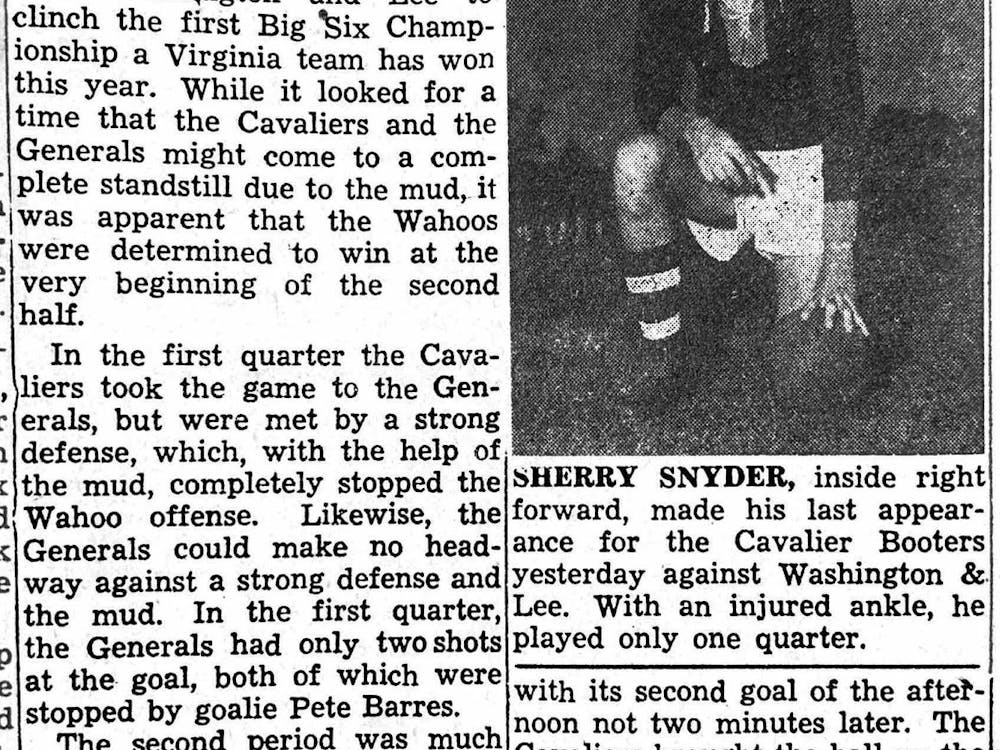After the release of their new V-sabre mark Thursday, Virginia Athletics is facing controversy regarding a component of the design that references the University’s past use of enslaved labor.
The new logo includes details on the sabre handles that were added to "mimic the serpentine walls" on Grounds that surround the garden spaces, according to promotional photos from Virginia Athletics.

The serpentine walls were originally built at the University to hide enslaved laborers from the University community and muffle the sounds of their daily life. Outlining each of the pavilion gardens framing the Lawn, these curved walls shielded the living quarters of slaves from view. While white students went to class, black slaves were concealed in pavilion basements.
University students and professors have protested the new design, claiming it disregards the history associated with the serpentine walls and instead uses it for promotional branding.
In an interview with The Cavalier Daily, second-year Batten student Lauren Cochran expressed that the walls contribute to the historically non-inclusive environment built by Thomas Jefferson, serving as a physical symbol of injustice that accompanied the already apparent social division at the University. She finds it repugnant that people stood by and approved of using a symbol of division as part of the “We Cavaliers” campaign and questions the message it conveys about the University’s overall nature of diversity and acceptance.
“When U.Va. Athletics decided to incorporate the walls into their logo designs, I felt as if they were attempting to ‘glorify’ past University wrongdoings,” Cochran said. “For many, this wall evokes stringent feelings of emotional distress and pain. As an African-American student who walks past these walls every day, I experience uncomfortable emotions relating to the
history and justification of the walls.”
In a tweet, Media Studies Professor Meredith Clark criticized the design’s ahistorical depiction of Grounds. Clark shared that the serpentine walls remain an unsettling component of her daily life teaching at the University during an interview with The Cavalier Daily.
“I came here the day after Heather Heyer was killed … so that summer I was here while all of that was unfolding,” Clark said. “It was definitely a vivid reminder of where I was, and the history that people want to make a current reality. That's the feeling that I have when I pass those walls.”
Serpentine walls are a distinguishing characteristic of the architecture of the University and were a part of Jefferson’s original plan for the Academic Village — to create a garden space outlined by the curved walls. Only one brick thick, these curved walls were able to conserve resources, using 25 percent fewer bricks than a straight wall.
During orientation tours, the serpentine walls are often mentioned along with their history. According to Clark, education about the significance of the University’s architecture is necessary in acknowledging the complex history of the University’s past use of enslaved labor.
“When I walk around Grounds, I have both a mixture of sadness and of pride,” Clark said. “Sadness that the experience of my ancestors is being enslaved on this University’s Grounds and building it and the University still not doing, in my view, enough to pay reparations to the ancestors or the descendants of those ancestors. But I also feel pride in that I come from a people who are so resilient that, through their sacrifices in their lives, I’m able to be here now doing what I do as a professor.”
Virginia Athletics partnered with Nike in the creation of this new brand identity that they hoped would be “bolder and more powerful” than its predecessor while still “reflecting the unique characteristics and traditions of Virginia Athletics.” In addition to the new V-sabre mark, two new secondary marks were also revealed. The new brand identity was designed to be more visible when placed next to competing institutions.
However, Cochran believes that they got this wrong.
“There is nothing ‘strong’ about a wall that incites racist rhetoric,” Cochran said.
As the primary mark for Virginia Athletics, the V-sabre mark is a reflection of the University and will be used on uniforms and merchandise beginning with the 2020-21 season. According to Clark, for those who understand the significance of the serpentine walls, this choice of design implies that the University finds it permissible to incorporate troublesome aspects of its history as part of its promotional branding.
“I think the folks on the University side and on Nike’s graphic design side failed to consider that U.Va. athletics is not just U.Va. athletics, it's all of the University of Virginia,” Clark said. “Those athletes, the coaches, they are ambassadors of this entire university, not just their programs, and so there are a lot of us who have emotional connections to the logo and to the name of the University.”
Despite the new logo’s attempt to be an honest depiction of a prominent architectural feature of Grounds, the University has taken other steps to honor this part of the University’s history. The Memorial to Enslaved Laborers, which will have a delayed opening due to operational changes, has an outer wall that rises to the same height as the original serpentine walls.
Cochran believes that U.Va. Athletics should either create a new handle detail entirely or, if the serpentine wall detailing remains, there needs to be an official statement connected to the logo on all platforms that explains the history of the walls. She feels that only then can this be seen as an opportunity to rectify injustice and establish empathy.
According to Clark, there are many ways in which the University can fix this issue and prevent similar issues from happening in the future, such as doing more research and including a larger cross-section of the community beyond only athletes when testing designs. This current design could even be changed to a limited-edition run.
“I'm sure that a lot of people just don't find [this] something to be upset about, and it's not so upsetting that it will keep me from doing a good job or for enjoying what I do or being at U.Va.,” Clark said. “I do think it is serious that we acknowledge our complex history … and that we do our best to do that while upholding the values that we claim to profess. That is, to me, essential to being both good and great.”
U.Va. Athletics has not responded to a request for comment as of press time.







